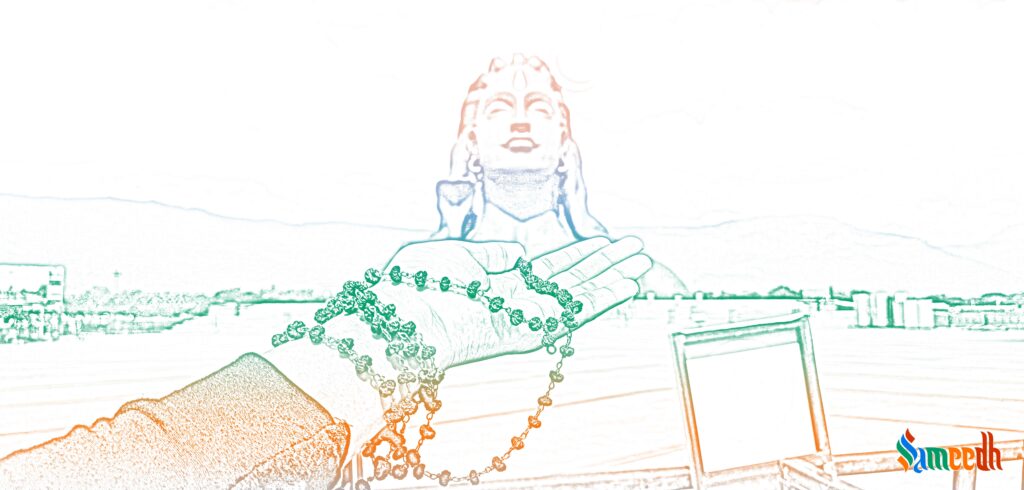Rudraksh seeds are harvested from the Elaeocarpus Ganitrus tree. Rudraksh is derived from the words ‘Rudra’ (Shiv) and ‘Aksh’, which means ‘tears’. Wearing a Rudraksh mala might help people keep their physical and emotional stability.

The terms ‘rudra’ and ‘aksh’ are combined to form the word Rudraksh. Aksh is a Sanskrit word which means ‘eye’. Rudra and Aksh are two words that describe someone who is able of seeing and doing everything. The eye is also known as aksh since it can revolve on one axis. Axis is another word for Aksh. Rudra is a name for someone who weeps. ‘A’ (अ) denotes receiving, while ‘ksha’ (क्ष) denotes giving. As a result, aksh (अक्ष) means having the ability to receive or give. Rudraksh is said to be able to wipe away our tears and bring us happiness.
Rudraksh can be found at a height of three thousand metres above sea level or at 3,000 metres below sea level. The rudraksh tree grows in a small hole rather than on flat ground. It has leaves that are similar to tamarind or nux vomica, although they are longer. It produces around 1,000-2,000 fruits every year. These fruits are the only source of nutrition for the Yatis (Ascetics) in the Himalayas. Amrutphal is yet another name for these fruits (Fruits of nectar). One of the Hawaiian Islands – Kauai – has a Rudraksh forest as well.
The fruits mature on the trees and fall off around the winter season. The seeds then dry up. There are 15 to 16 seeds in each fruit. The higher the number of seeds, the smaller the size and the lower the price. Many small rudrakshs are strung together with one huge rudraksh instead of utilising a single small rudraksh. A natural cut or opening from one side to the other exists in a rudraksh; it does not need to be formed. Vahini is the name given to this opening that covers its entire diameter. Rudraksh is of reddish colour with yellow stripes which is flat and shaped like a fish. It has an open mouth on one side. A Maharudra is a rudraksha with more than ten apertures.
Rudrakshs are usually mentioned in ancient Indian scriptures. Rudraksh seeds are harvested from the Elaeocarpus Ganitrus (Botanical name) tree; it literally means ‘Shiv’s tears.’ Rudraksh is derived from the words ‘Rudra’ (Shiv) and ‘Aksh’, which means ‘tears’. Wearing a Rudraksh mala might help people keep their physical and emotional stability. It is worn by the majority of spiritual practitioners because they feel it assists them in their spiritual aspirations. According to experts, it has medicinal powers that benefit in the treatment of physical, mental, and psychosomatic disorders.
It can be worn by everyone, regardless of gender, ethnicity, location, or religious beliefs. People who are suffering from disease, high/low blood pressure, lack of attention, or grief can attain mental peace. Wearing Rudraksh helps students in concentrating on their studies.
According to scientific research, the number of beads that should be strung into the mala should be 108 plus one extra bead called as Meru. This Meru bead is very important since it assures that the Rudraksh’s energy does not become repetitious. In sensitive persons, this energy cycle might cause dizziness. Different Rudraksh, which grant Shiva’s blessings, are associated with various deities, wishes, and so forth. The Rudraksh houses a variety of deities, planets, constellations, and other elements with various faces.